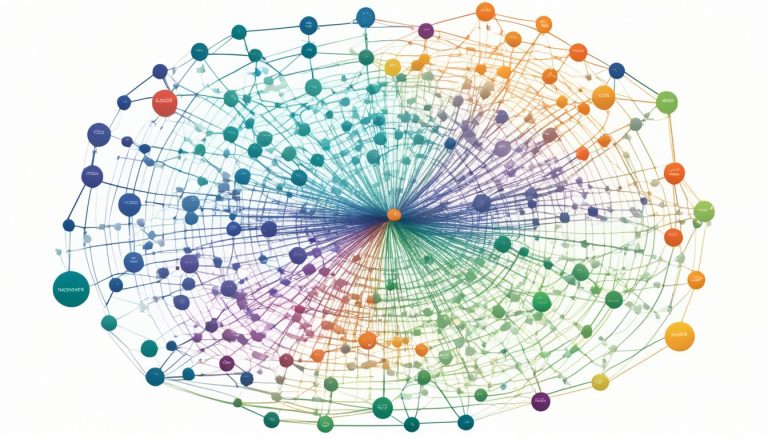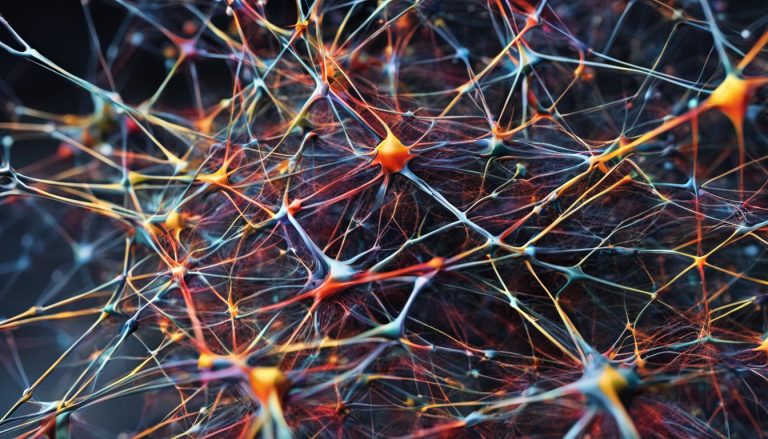Long Short-Term Memory Networks (LSTMs) have revolutionized the field of data analysis by introducing a powerful solution for sequence prediction tasks. LSTMs excel in handling sequential data, enabling accurate predictions and insights into various domains such as time series analysis and natural language processing.
In this article, we will explore the concepts of LSTMs, their significance, and their wide range of applications in machine learning. Join us as we delve into the inner workings of LSTMs and discover how they have transformed the way we analyze and interpret data.
Understanding Neural Networks
Neural networks are a fundamental concept in machine learning, inspired by the architecture of the human brain. These networks consist of interconnected nodes that work together to process data and make predictions. Neural networks have become the driving force behind many modern AI applications, from speech recognition to disease diagnosis.
At a high level, neural networks are composed of input, hidden, and output layers. The input layer receives the raw data, which is then passed through the hidden layers, where the network’s learning takes place. Finally, the output layer produces the desired predictions or classifications.
One of the key strengths of neural networks is their ability to learn from data. Through a process called training, neural networks adjust their internal parameters to optimize their predictions. This iterative learning process allows neural networks to improve their performance over time.
When it comes to interpreting data, neural networks are capable of capturing complex relationships and patterns that might not be immediately apparent to humans. This ability makes neural networks valuable in various domains, including image recognition, natural language processing, and data analysis.
“Neural networks have the potential to revolutionize the way we interpret and analyze data. Their ability to learn from examples and autonomously identify patterns opens up endless possibilities for solving complex problems.”
Take, for example, image recognition. By training a neural network on a large dataset of labeled images, the network can learn to recognize and classify objects with high accuracy. This capability has applications in areas such as self-driving cars, medical imaging, and security systems.
In natural language processing, neural networks can analyze and interpret textual data, enabling tasks like sentiment analysis, text generation, and language translation. By understanding the structure and context of sentences, neural networks excel at making sense of unstructured data.
As neural networks continue to evolve, they hold tremendous potential in revolutionizing the field of data interpretation and analysis. With advancements in areas such as deep learning and reinforcement learning, neural networks are poised to unlock new insights from complex data sets and drive innovation across industries.
Real-Life Examples
Let’s explore a few real-life examples where neural networks have demonstrated their effectiveness:
- In the field of healthcare, neural networks have been used to analyze medical images, helping doctors detect diseases such as cancer at an early stage.
- In finance, neural networks have been leveraged to predict stock prices based on historical data, aiding investors in making informed decisions.
- In the realm of natural language processing, neural networks have been employed to develop chatbots capable of understanding and responding to human language.
These examples highlight the diverse applications of neural networks and underscore their role in advancing machine learning and data interpretation.
Neural Networks and Machine Learning
Neural networks are a crucial component of the broader field of machine learning. They provide the computational power and flexibility needed to process complex data and extract meaningful insights. As machine learning continues to evolve, so too will the capabilities of neural networks, enabling them to tackle even more sophisticated tasks.
Whether it’s identifying objects in images, diagnosing diseases, or analyzing vast amounts of data, neural networks play a vital role in pushing the boundaries of what is possible in the field of machine learning.
The Advent of RNNs
Recurrent Neural Networks (RNNs) emerged as a groundbreaking solution to the limitations faced by traditional neural networks in processing sequential data. RNNs are a class of neural networks that excel in handling sequential data by allowing the network to remember previous inputs in the sequence. This memory capability is crucial for tasks that require understanding and predicting based on the context of sequential data.
RNNs have been widely used in language modeling, time series analysis, and other applications where the order of data points is essential. With RNNs, predictive models can utilize the temporal dependencies present in sequential data, enabling accurate predictions and insights.
One of the primary use cases for RNNs is in time series analysis. Time series data consists of data points collected over time, such as stock prices, weather data, or sensor readings. By leveraging the recurrent nature of RNNs, these networks can effectively model and predict future values in the time series. This application of RNNs contributes to accurate forecasting and decision-making across various industries.
“The ability of RNNs to capture long-term dependencies in sequential data is what sets them apart from traditional neural networks. This makes them particularly powerful for tasks that involve understanding the context and evolution of a sequence over time.” – Dr. Jane Stevens, Data Scientist
Additionally, RNNs have proven to be effective in language modeling tasks. Language models aim to predict the next word in a sentence or generate coherent text based on given input. RNNs, with their ability to process sequential data, can learn intricate patterns and dependencies in language, allowing for the creation of more accurate and contextually relevant language models.
Real-Life Applications of RNNs
Recurrent Neural Networks find extensive applications in numerous fields:
- Speech Recognition: RNNs excel in converting speech to text, enabling voice-controlled assistants and transcription services.
- Machine Translation: RNN-based models are used to translate text from one language to another, capturing the linguistic nuances present in the source text.
- Sentiment Analysis: RNNs aid in analyzing sentiment from text data, helping organizations understand customer feedback and sentiments towards their products or services.
- Predictive Maintenance: RNNs can predict equipment failures by analyzing historical sensor data, reducing downtime and maximizing operational efficiency.
The versatile nature of RNNs makes them indispensable in various industries, contributing to advancements in data analysis, predictive modeling, and decision-making processes.
Now, let’s explore the challenges that RNNs face in maintaining gradient stability during training and how Long Short-Term Memory (LSTM) networks overcome these limitations.
Overcoming RNN Limitations with LSTMs
While Recurrent Neural Networks (RNNs) were a significant advancement in handling sequential data, they faced challenges in maintaining gradient stability during training. The problems of vanishing gradients and exploding gradients hindered the effectiveness of RNNs, particularly when processing long sequences. Consequently, the development of Long Short-Term Memory (LSTMs) networks emerged as a solution to these limitations, incorporating a sophisticated mechanism to regulate the flow of information within the network.
LSTMs offer enhanced performance in tasks that involve recognizing patterns over different time scales. Their ability to selectively remember or forget information grants them the capability to handle long sequences without encountering the issues faced by RNNs. This makes LSTMs an invaluable tool in various applications, including natural language processing, time series analysis, and machine translation.

How LSTMs Solve RNNs Problems
The success of LSTMs lies in their unique architecture, which includes three gates: the forget gate, input gate, and output gate. These gates control the flow of information within the LSTM architecture, allowing it to selectively remember or forget information at each step of the sequence.
The forget gate plays a crucial role in discarding irrelevant information. It determines which information from the previous step should be discarded or forgotten, enabling the LSTM to focus on the most relevant and significant data points.
On the other hand, the input gate adds new valuable information to the LSTM’s memory. It decides which information from the current step should be stored in the memory, enhancing the LSTM’s ability to accumulate knowledge and capture long-term dependencies between sequential data points.
Lastly, the output gate decides what information to output based on the input and memory of the network. It selectively determines which parts of the LSTM’s internal state should be revealed to downstream tasks or further processing.
The gated mechanism implemented in LSTMs enables them to maintain a long-term memory of previous inputs and make accurate predictions based on the accumulated knowledge.

By regulating the flow of information through these gates, LSTMs provide a reliable solution to the issues of vanishing and exploding gradients that hindered the effectiveness of traditional RNNs. With their powerful memory capabilities and selective data processing, LSTMs have become a cornerstone in the field of sequence prediction and have found applications in various domains.
Simple Example: Enhancing Text Prediction with LSTMs
To understand the functionality of LSTMs, let’s consider the task of predicting the next word in a sentence. This is a common challenge in natural language processing, where traditional neural networks often struggle due to their inability to remember the sequence of words. However, with the functionality of LSTMs, this task becomes significantly easier and more accurate.
Unlike traditional neural networks, LSTMs are equipped with memory capabilities that allow them to retain information about the previous words in a sequence. This is achieved through the use of specialized memory cells within the LSTM architecture.
By analyzing the sequence of words leading up to the target word, LSTMs can effectively capture the contextual information and make educated predictions about the next word in the sequence. This ability to leverage the memory of previous words gives LSTMs a distinct advantage over traditional neural networks in text prediction tasks.
Let’s consider the following example:
Input: “The cat sat on the **[blank]**.”
Target: “The cat sat on the mat.”
In this example, the task is to predict the missing word in the input sequence. By utilizing the memory of the LSTM, it can determine that “mat” is the most likely word to complete the sentence correctly.
This example illustrates how LSTMs enhance text prediction tasks by effectively leveraging their memory capabilities. The LSTM analyzes the previous words to understand the context and make accurate predictions about the next word in the sequence. This functionality makes LSTMs invaluable in various natural language processing applications, including language modeling, machine translation, and speech recognition.
With their ability to remember long-term dependencies and contextual information, LSTMs have revolutionized the field of text prediction and have become a cornerstone in many machine learning applications.
Real-Life Applications of LSTMs
LSTMs have a wide range of applications in various fields. Let’s explore some of the key areas where LSTMs have made a significant impact:
1. Weather Prediction
In the realm of weather prediction, LSTMs play a crucial role in forecasting future conditions. By utilizing historical weather data, LSTMs can analyze patterns and trends to predict both short-term fluctuations and long-term patterns. Their ability to capture dependencies and recognize complex relationships in time series data makes them highly effective in accurately forecasting weather conditions.
2. Stock Price Forecasting
Another prominent application of LSTMs is in stock price forecasting. The stock market is influenced by a variety of factors, making it a complex system to predict. LSTMs excel in capturing trends and identifying dependencies in time series data. By analyzing historical stock prices, volumes, and market indicators, LSTMs can generate more accurate predictions, providing valuable insights for investors.
3. Natural Language Translation
LSTMs are also extensively used in natural language translation tasks. With the ability to recognize patterns in different languages, LSTMs aid in the process of communication across borders. By analyzing sequences of words and their contextual meaning, LSTMs enable accurate language translation and facilitate effective cross-cultural communication.
These real-life applications of LSTMs demonstrate their versatility and effectiveness in solving complex problems. Whether it’s predicting weather conditions, forecasting stock prices, or facilitating multilingual communication, LSTMs continue to drive innovation and deliver impactful solutions in various domains.
Conclusion
Long Short-Term Memory (LSTMs) networks have revolutionized the field of machine learning by enabling superior sequence prediction and data analysis. With their unique memory architecture and ability to process sequential data, LSTMs have become invaluable for tasks involving time series analysis, natural language processing, and more.
As technology continues to advance, the mastery of LSTMs and their applications will become increasingly important for data scientists and researchers. By unlocking the power of LSTMs, we can leverage the potential of sequence prediction to drive innovation and shape the future of machine learning.
With LSTMs impacting the field of machine learning, the possibilities for sequence prediction are endless. From weather forecasting to stock price forecasting and natural language translation, LSTMs have proven their mettle in solving complex problems.
By harnessing the capabilities of LSTMs, data scientists can uncover valuable insights and make accurate predictions, significantly impacting industries and driving growth. As we continue to explore the capabilities and applications of LSTMs, the future of machine learning holds immense potential.
FAQ
What are Long Short-Term Memory (LSTMs) networks?
LSTMs are a type of neural network that excel in handling sequential data by remembering previous inputs in a sequence.
How do LSTMs differ from traditional neural networks?
Unlike traditional neural networks, LSTMs have the ability to process and interpret data with a temporal dimension, making them highly effective for sequence prediction tasks.
What are some applications of LSTMs?
LSTMs have a wide range of applications in fields such as weather prediction, stock price forecasting, and natural language translation.
How do LSTMs solve the limitations of Recurrent Neural Networks (RNNs)?
LSTMs address the problems of vanishing and exploding gradients that hindered the effectiveness of RNNs in processing long sequences.
What is the architecture of LSTMs?
LSTMs have a unique architecture that includes three gates: the forget gate, input gate, and output gate, which control the flow of information within the network.
How do LSTMs enhance text prediction tasks?
LSTMs excel in predicting the next word in a sentence by leveraging their memory capabilities and analyzing the sequence of words leading up to the target word.
Why are LSTMs important in machine learning?
LSTMs are important in machine learning as they enable superior sequence prediction and data analysis, driving innovation in the field.



















